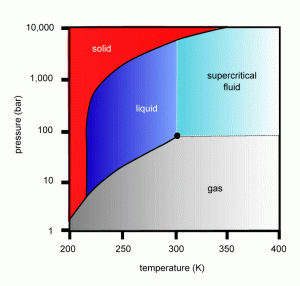 As we discussed in a previous blog posting, there is a lot of confusion and ambiguity surrounding many of the Sea Buckthorn oils on the market and in skincare formulations. In addition to the points we mentioned in our previous blog, there is another common misconception: Essential oil of Sea Buckthorn. We’ve seen this “ingredient” listed on some supplier sites and in several skincare formulations—interesting, since currently, there is no such thing as a true Sea Buckthorn Essential oil on the market. Both Sea Buckthorn fruit oil and Sea Buckthorn seed oil are actually Carrier oils. So what is the difference between a Carrier oil and an Essential oil and why is it important to differentiate between the two? Because Essential oils and Carrier oils are completely different “oil” types, with completely different structures and uses, and are obtained in completely different ways.
As we discussed in a previous blog posting, there is a lot of confusion and ambiguity surrounding many of the Sea Buckthorn oils on the market and in skincare formulations. In addition to the points we mentioned in our previous blog, there is another common misconception: Essential oil of Sea Buckthorn. We’ve seen this “ingredient” listed on some supplier sites and in several skincare formulations—interesting, since currently, there is no such thing as a true Sea Buckthorn Essential oil on the market. Both Sea Buckthorn fruit oil and Sea Buckthorn seed oil are actually Carrier oils. So what is the difference between a Carrier oil and an Essential oil and why is it important to differentiate between the two? Because Essential oils and Carrier oils are completely different “oil” types, with completely different structures and uses, and are obtained in completely different ways.
Essential oils are also known as volatiles or ethereal oils. Technically, they are not oils, but volatile hydrophobic liquids that evaporate. Some of the main chemical constituents found in Essential oils include Alcohols, Aldehydes, Esters, Ethers, Ketones, Phenols, and Terpenes. Essential oils are obtained ONLY by steam distillation, hydro-distillation, or vacuum distillation of various aromatic parts of a botanical, including the leaves, bark, steam, or flowers. Note that even an “Essential oil” obtained by “CO2-distillation” is not a true Essential oil, as it was not actually obtained by distillation. It’s simply an extract, and has different properties than an Essential oil.
Essential oils tend to be clear to yellow in colour, are highly concentrated, and carry the powerful, characteristic aroma of the plant or plant part from which they were obtained. They can be volatilized or diluted in carrier oils for use on the skin, diffused in the air, or burned as incense. Essential oils do not go rancid over time, but they do oxidize and lose their therapeutic benefits. Because they are extremely potent, a little goes a long way—especially in skincare products. A mere drop or two, diluted in carrier oils, is generally enough to impart the oil’s scent and therapeutic benefits. Some people can experience severe reactions to Essential oils, especially if they are used undiluted on the skin.
Carrier oils, on the other hand, are true oils. They are also known as vegetable oils, base oils, or fixed oils (though not all carrier oils are vegetable oils—some carrier oils, such as emu oil, are actually derived from animals). Carrier oils are typically obtained from the fatty portion of a plant (or animal!) via a variety of different methods, including Supercritical extraction, cold-press, solvent extraction, maceration, and centrifuge. Their molecular structures are much heavier and larger than those of Essential oils and consist mainly of lipids, such as fatty acids, waxes, and fat-soluble vitamins, such as A, D, E, and K (substances which are not found in an Essential oil). They generally do not have a strong, concentrated odor (though some, such as black cumin seed oil, do emit a powerful aroma) and they do not evaporate (hence the term ‘fixed’ oil), unlike volatile essential oils. They are called “carrier oils” because they carry Essential oils into the skin. However, Carrier oils are not used in skincare products and massage therapy simply to dilute and extend the life of Essential oils. They also offer their own unique characteristics and therapeutic benefits. For example, some Carrier oils, like Sea Buckthorn fruit and seed oils, have nourishing, healing, softening, anti-aging, and protective properties, making them very desirable for skincare formulations. The shelf life of a Carrier oil varies depending on the constituents of the oil, and Carrier oils do go rancid over time.
So, as you can see, Essential oils are very different from Carrier oils. The two oil types are not interchangeable and shouldn’t be confused with one another. Sea Buckthorn fruit and seed oils are both Carrier oils—and this is actually what makes them special. It’s their molecular structures, with amazing fatty acid profiles, including Omegas 3, 6, 7, & 9, vitamins, antioxidants, and other nutrients, which makes them so valuable. So if you see “Sea Buckthorn Essential oil” in a product formulation, you can guess that the oil is actually a Carrier oil or extract, not an Essential oil, and that’s not a bad thing, it just means that the source may be misinformed about what type of oil they have! And if you have any doubt, ask the manufacturer how the oil was extracted and what its main chemical constituents are—that should give a big clue as to what type of oil it actually is!
